Kenneth Rexroth was a central figure in the San Francisco Renaissance and influenced generations of readers with his essays and consummate translations of Japanese and Chinese poetry.
Born in 1905, Rexroth’s career spans almost the entire century. Although forty of his seventy-seven years as poet, translator, essayist, playwright, and revolutionary activist were spent in San Francisco, his intellectual and artistic formative years occurred in the Midwest, mainly in Chicago, where he associated with artists, writers, and theorists of radical politics and philosophies.
Rexroth’s concerns were universal from his youth until his final years, focusing on politics, pacifism, erotic love, the environment, and a spirituality firmly rooted in both Asian and Western traditions. But he will forever be associated with the San Francisco Renaissance of the fifties in which he played a major role, promoting poets Allen Ginsberg, Gary Snyder, Denise Levertov and many others over FM radio station KPFA.
Sam Hamill, editor of The Complete Poems of Kenneth Rexroth writes of him, “The man who survives in these poems is a great man, wise beyond words, a poet polished by great loss and small glory. He has given in his work exactly what he sought in life: a sense of a compassionate moral center from which the possibility of ultimate awakening may be realized.”*
Hamill joins Jerry Jazz Musician publisher Joe Maita in a June, 2003 conversation about Kenneth Rexroth, the man Time magazine described as the “Father of the Beats.”
*
Kenneth Rexroth
*
The Advantages of Learning
_________
I am a man with no ambitions
And few friends, wholly incapable
Of making a living, growing no
Younger, fugitive from some just doom.
Lonely, ill-clothed, what does it matter?
At midnight I make myself a jug
Of hot white wine and cardamon seeds.
In a torn grey robe and old beret,
I sit in the cold writing poems,
Drawing nudes on the crooked margins,
Copulating with sixteen year old
Nymphomaniacs of my imagination.
*
Listen to Cannonball Adderley play Bohemia After Dark
_______________________________________
JJM What drew you to Kenneth Rexroth’s poetry?
SH When I was about fourteen, I discovered the San Francisco Renaissance — which at the time was in full swing — and devoured the works of Jack Kerouac, Philip Whalen, Gary Snyder, Kenneth Rexroth, Lawrence Ferlinghetti, and basically that whole group. The experience of reading these writer’s work revolutionized me. I ended up leaving Utah, where I had had a pretty unhappy childhood, and took to the streets in San Francisco for a couple of years before I realized that I was self-destructing. The entire beat scene was terribly important to me as a young writer. It basically made me decide what sort of person I wanted to be when I grew up.
JJM What was Rexroth’s creative spark?
SH Kenneth had the most encyclopedic mind I have ever encountered. He read everything, he knew everything, and he had very near total recall. What excited me about his poetry first of all were the erotic poems. The erotic poems for women are really unique and splendid, and are equally physical and meta-physical. His poems about the wilderness are phenomenal. And when I discovered his longer poems, he seemed to be a master of everything I wanted to write about.
JJM You mention being moved by his erotic love poems. What is an example of a poem that reflects his view of love?
SH “Confusion of the Senses” is a terrific poem, written in the seventies. There are an equal number of splendid early poems, but I think “Confusion of the Senses” has it all in a short poem.
Confusion of the Senses
Moonlight fills the laurels
Like music. The moonlit
Air does not move. Your white
Face moves towards my face.
Voluptuous sorrow
Holds us like a cobweb
Like a song, a perfume, the moonlight.
Your hair falls and holds our faces.
Your lips curl into mine.
Your tongue enters my mouth.
A bat flies through the moonlight.
The moonlight fills your eyes
They have neither iris nor pupil
They are only globes of cold fire
Like the deers’ eyes that go by us
Through the empty forest.
Your slender body quivers
And smells of seaweed.
We lie together listening
To each other breathing in the moonlight.
Do you hear? We are breathing. We are alive.
As clear and as simple as that poem is, it has everything in it. I would suggest that the “Voluptuous sorrow” is the human condition, and his placement of the lovers in nature completes the metaphysical picture. There are any number of poems in which he talks about our timeless flesh juxtaposing it to our mortality, as though both things were simultaneously equally true. Philosophically and artistically it is a very daring thing to do, and I think a wise vision of humanity.
JJM Who were his early creative and poetic influences?
SH They are so vast they are almost innumerable. In the teens and twenties he was basically a young poet following the romantic tradition. But as he evolved and his philosophy grew deeper and more complex, and as he began devouring Buddhism and Hinduism, his poetry opened up into a more expansive view of the universe. He was influenced by the cubists, by a lot of painters, as well as by tons of musicians, from Dizzy Gillespie to Erik Satie. He wrote poems for many jazz musicians. But he was basically a neo-classisist above all else.
JJM What made him decide to abandon his attempts at cubist poetry?
SH He decided that people simply didn’t know enough to understand them, that they were basically too effete, and he wanted to write poetry that ordinary people could understand.
JJM Topics that seem to dominate his work are politics, love, spirituality, mortality, and nature. Can you talk a little about Rexroth’s politics?
SH He was a moral anarchist who believed that the vicissitudes of the state were fundamentally evil, and that absolute power corrupts absolutely. He was a feminist before that word even existed in our vocabulary. He was engaged in radical politics all of his life, including forming an underground railway for Japanese Americans to escape the concentration camps of World War II. He was a conscientious objector, and worked in a hospital for the mentally disturbed rather than serve in the war. He was consistently looking for a moral base, and read history and philosophy to clarify it for himself.
JJM Did World War II get him to reconsider his politics at all?
SH Absolutely not. One of the things many Americans may not understand about World War II is that Franklin Roosevelt knew that Pearl Harbor was going to be attacked. He wanted it attacked because that was the only thing that would move the American people to enter the war, which he believed we should be a part of. Rexroth believed that war is an expression of a lack of moral courage, and he viewed this country’s imprisonment and internship of Japanese Americans and the administration’s knowledge that Pearl Harbor was going to happen as an utter failure of moral character on the part of our leadership.
JJM What poem best communicates his outrage about the war?
SH I would turn to a poem called “For Eli Jacobson,” which was written in 1952. In the poem, he is looking back to the days when he and Jacobson were organizing for various worker’s causes.
For Eli Jacobson
There are few of us now, soon
There will be none. We were comrades
Together, we believed we
Would see with our own eyes the new
World where man was no longer
Wolf to man, but men and women
Were all brothers and lovers
Together. We will not see it.
We will not see it, none of us.
It is farther off than we thought.
In our young days we believed
That as we grew old and fell
Out of rank, new recruits, young
And with the wisdom of youth,
Would take our places and they
Surely would grow old in the
Golden Age. They have not come.
They will not come. There are not
Many of us left. Once we
Marched in closed ranks, today each
Of us fights off the enemy,
A lonely isolated guerilla.
All this happened before.
Many times. It does not matter.
We were comrades together,
Life was good for us. It is
Good to be brave – nothing is
Better. Food tastes better. Wine
Is more brilliant. Girls are more
Beautiful. The sky is bluer
For the brave – for the brave and
Happy comrades and for the
Lonely brave retreating warriors.
You had a good life. Evan all
Its sorrows and defeats and
Disillusionments were good,
Met with courage and a gay heart.
You are gone and we are that
Much more alone. We are one fewer,
Soon we shall be none. We know now
We have failed for a long time.
And we do not care. We few will
Remember as long as we can,
Our children may remember,
Some day the world will remember.
Then they will say, “They lived in
The days of the good comrades.
It must have been wonderful
To have been alive then, though it
Is very beautiful now.”
We will be remembered, all
Of us, always, by all men,
In the good days now so far away.
If the good days never come,
We will not know. We will not care.
Our lives were the best. We were the
Happiest men alive in our day.
The point of the poem is that you do good work for the sake of good work, not because you actually expect super human change in the world. You do what is right because doing what is right is more gratifying than anything else.
JJM He experienced tremendous personal trauma during his life. His mother died when he was a youngster, his grandmother frequently beat him with a cane, and he lost his wife at a very young age. With all this going on, how did he hang on to hope?
SH He was fond of saying, “They have hope who have nothing else.” Basically, he found comfort in reading.
JJM Who opened Rexroth’s eyes to Chinese poetry?
SH Arthur Waley, and to a lesser degree James Legge. Waley began publishing his translations of ancient Chinese poetry in the 19-teens, and certainly Rexroth read that work. Perhaps most important of all was Ezra Pound’s little anti-war book called Cathay, which is basically a small collection of poems that may be the most influential book of poetry published in America during the twentieth century. It really changed the way we look at and think about poetry altogether.
JJM Rexroth called Tu Fu the greatest non-epic, non-dramatic poet in history. What did he share with the Chinese poets he so admired?
SH With Tu Fu in particular, he shared his political commitment, his anti-war convictions, and a deep love of literary traditions. Tu Fu was very much a literary traditionalist, and a real “down and outer” who was never really known during his lifetime. In fact, he wasn’t known until nearly 150 years after his death. We have only 1,554 of Tu Fu’s approximately 10,000 poems, but among those 1,554 poems are many of the most spectacular poems in classical Chinese. Rexroth saw Tu Fu as an outsider, as someone who was politically engaged, and someone who was looking for a moral root in his life.
JJM Rexroth attempted to bridge Eastern and Western traditions in his poetry. What is a good example of such a poem?
SH In some ways, all of his late work is full of that, but let me turn to a poem called “Yin and Yang.”
Yin and Yang
It is spring once more in the Coast Range
Warm, perfumed, under the Eastern moon.
The flowers are back in their places.
The birds back in their usual trees.
The winter stars set in the ocean.
The summer stars rise from the mountains.
The air is filled with atoms of quicksilver.
Resurrection envelops the earth.
Geometrical, blazing, deathless,
Animals and men march through heaven,
Pacing their secret ceremony.
The Lion gives the moon to the Virgin.
She stands at the crossroads of heaven,
Holding the full moon in her right hand,
A glittering wheat ear in her left.
The climax of the rite of rebirth
Has ascended from the underworld
Is proclaimed in light from the zenith.
In the underworld the sun swims
Between the fish called Yes and No.
Here he has heaven and the virgin and the lion and all of these Christian images right along with the Easter moon and resurrection. And together with that, absolutely fluidly, the whole Taoist sense of Ying and Yang. It is a perfect merging of Eastern and Western theology, if you will, although you are pressed to call Taoism real theology since there is no faith involved.
JJM I know Rexroth mainly from his work as a columnist with the San Francisco Examiner and his participation in the San Francisco Renaissance
SH He was often called the “Father of the Beat movement,” which he really despised. When Time magazine called him the “Father of the Beats” he replied, “An entomologist is not a bug.” Robert Duncan used to say that Kenneth was not our master, he was our librarian.
JJM He had a tremendous impact on Allen Ginsberg because he hosted Ginsberg’s Six Gallery reading of “Howl.”
SH Yes. By the way, I have since met about three thousand people who claim to have been at that reading, and by my estimation there were all of a two dozen people present!
JJM On the flip side of the interest he showed in Ginsberg, in a review of Kerouac’s 1958 book of poetry Mexico City Blues, Rexroth wrote, “Somebody once said of Mr. Kerouac that he was a Columbia freshman who went to a party in the Village twenty years ago and got lost. How true.” Why did he despise the Beats, and Kerouac in particular?
SH Well, he didn’t despise the beats. One of his really wonderful late poems is in fact a poem dedicated to Gary Snyder, about whom he always felt very cordial. Lawrence Ferlinghetti was one of his closest and most beloved friends. What he disliked was the people who came basically in the second wave who thought that boozing and drug taking was the ultimate path to enlightenment.
He and Kerouac always disliked each other, partly because Kerouac had to absolutely be the center of attention. That is just the way it was. He sat through that “Howl” reading in the Six Gallery, beating on an empty wine bottle, driving everybody crazy. And Rexroth and Kerouac had a couple of famous shouting matches, one was when Kenneth threw him out of one of those “Friday Night at Kenneth’s” gatherings. They had a personality conflict, among other things, and Kenneth really saw Kerouac as an Easterner who came West, and who basically embraced San Francisco beat values and watered them down.
JJM Yet if you talk to certain Kerouac friends and scholars, they feel as if he was also a victim of being associated with the down side of the beat culture, where his art was viewed as work influenced by the drug culture and less so for its own prominence.
SH In the final analysis, Kerouac wrote some pretty extraordinary books, but he was fundamentally a deeply flawed human being and a very sick man. Besides his alcoholism, we can look at his very twisted relationship with his mother and with women throughout his life. It leads to the question of was he gay and in the closet and in love with Neal Cassady? And in the end, his last public appearance basically is to campaign for Richard Nixon in 1968. Well, that right there will tell you exactly why Kenneth hated him!
JJM Was Rexroth instrumental in organizing the poetry readings that included music?
SH Yes, Kenneth Rexroth and Kenneth Patchen were the first two American poets to really do this on the West Coast. Patchen was afflicted and basically bed ridden, so the organizing of poetry and jazz was done by Rexroth and Ferlinghetti, for the most part. If you ever get a chance to listen to the Fantasy recordings of Kenneth and Ferlinghetti from the Cellar Club, they are quite extraordinary. I don’t believe they have ever been re-released, so they may be very tough to find.
JJM Do you recall who the musicians were that played during the readings?
SH Kenneth did an opera with the Modern Jazz Quartet, and he also worked with Nat and Cannonball Adderley. He played with a variety of other musicians who were just in and around San Francisco at various times.
JJM Was there a Northeastern bias that prevented a Westerner like Rexroth to be taken seriously?
SH If you look at the literary awards in this country you will see that there is still an East Coast bias. Westerners are still seen, to a large degree, as wild, wooly reactionaries or something. Otherwise, how do you account for the endless number of prizes for someone like John Ashbery, when the Rexroths and the Snyders are so very rarely acknowledged as the great masters that they are? I think there is also a difference in sensibility between the East Coast and the West Coast. The East Coast really looks to England and France, and far more East Coast poets have French or some other European romance language as their second language focus, whereas those in the West look to Japan and China.
JJM The publication of this book is clearly a labor of love on your part, and an ambitious attempt to connect readers of poetry to Kenneth Rexroth’s work. What about his poetry do you feel needs to be heard by a contemporary audience?
SH I think nearly all of it. I am not crazy about his cubist poems, but the more narrative poems, his longer poems, and the shorter lyrical poems are full of joy, great humor, revolutionary conviction and plain old extraordinary courage. In addition to all of this, it is just very beautiful poetry. It is poetry, as William Carlos Williams used to say, “with a sweep of the mind,” and Rexroth did have a great sweep of the mind.
JJM You chose quite an unusual cover for the book. How do you connect the cover art to Rexroth’s work?
SH I chose the cover image because I thought that neoclassical torso represented something shared with Rexroth: its neoclassicism, its “bodiness,” its very contemporary treatment of an ancient theme, and I suppose I wanted to shock people a little, to wake them up with that cover. Rexroth embodied what is contemporary in the Greek Anthology and in Noh drama. He loved to be shocking, “l’enfant terrible” to the end. He was dramatic to say the least, and never more so than in his rare understatements, like a great jazz musician.
JJM What would you say Rexroth’s most important messages for today are?
SH I don’t like to reduce poems to messages. It is more complex than that. Poetry changes one’s life, but it changes it slowly and personally and privately. Each of us that reads Rexroth will be reading a different poem and a different poet, because we bring our own experience to the poetry that we read. It interpolates and weaves itself together. The simple fact is that Kenneth is a major vision and a major poet at a time when we really need poetry.
_______________________________________
The Complete Poems of Kenneth Rexroth
Edited by
Sam Hamill and Bradford Morrow
About Sam Hamill
JJM Who was your childhood hero?
SH Only one? I had hundreds. Kenneth Rexroth was certainly one of my childhood heroes. Before Rexroth, probably some old dead Greek guy. Literary figures have always been among my heroes.
JJM Any one stand out in particular?
SH Well, Rexroth, Lawrence Ferlinghetti and Gary Snyder were very important to me as an adolescent, and shortly thereafter I would add Denise Levertov and Tom McGrath.
________________________________
Kenneth Rexroth products at Amazon.com
Sam Hamill products at Amazon.com
_______________________________
Interview took place on June 16, 2003
*
If you enjoyed this interview, you may want to read our interview with Jack Kerouac’s musical collaborator David Amram.
*
Other Jerry Jazz Musician interviews
* From the publisher





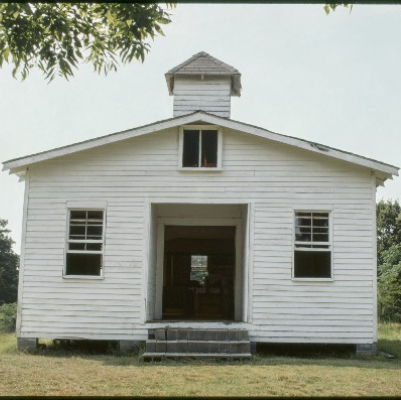
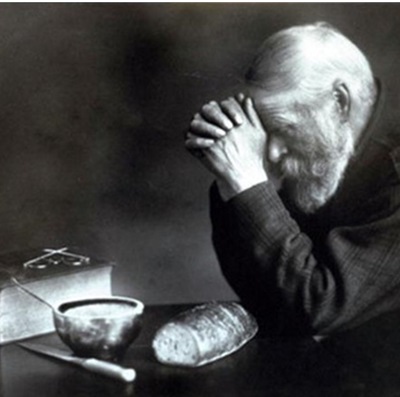




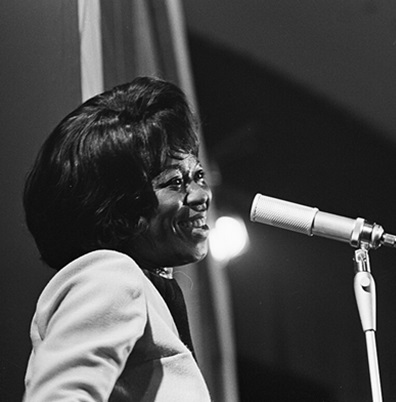












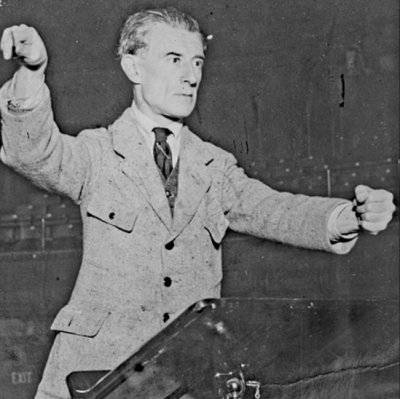

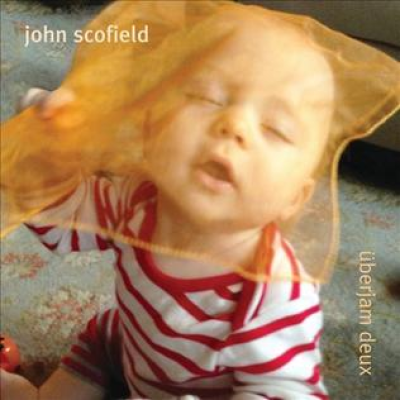







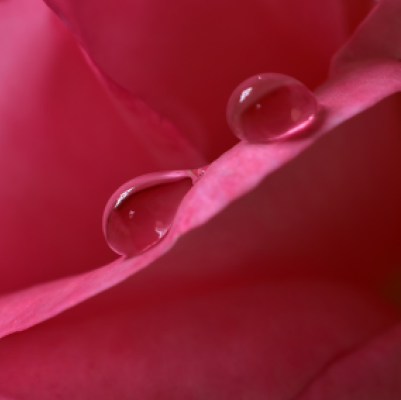











The photo of Sam Hamill was taken by W.T. Pfefferle in Port Townsend, WA in November 2003.
The photo of Sam Hamill was taken by W.T. Pfefferle in Port Townsend, WA in November 2003.